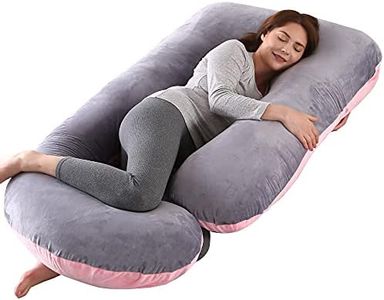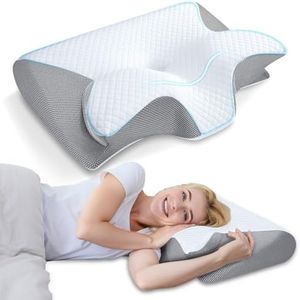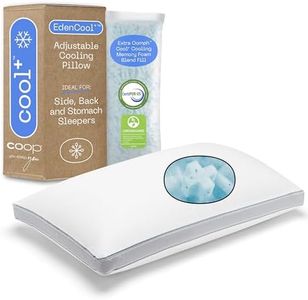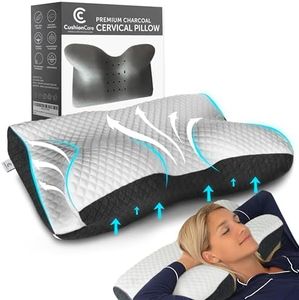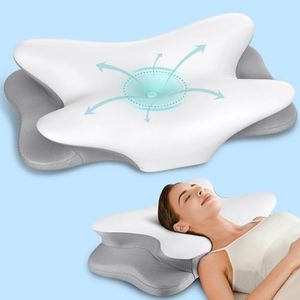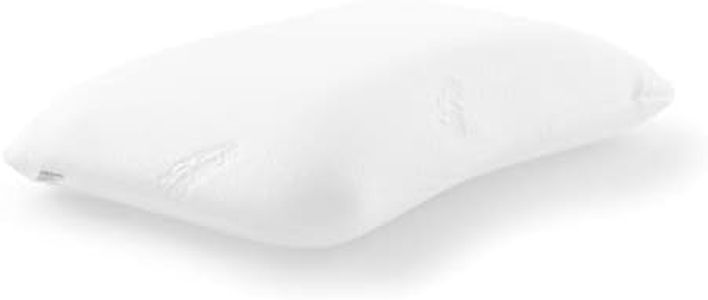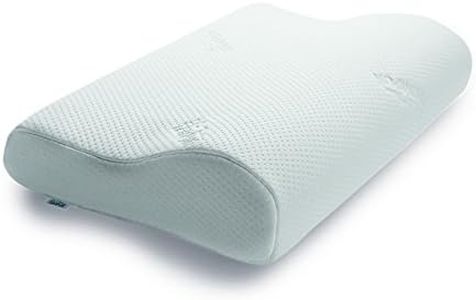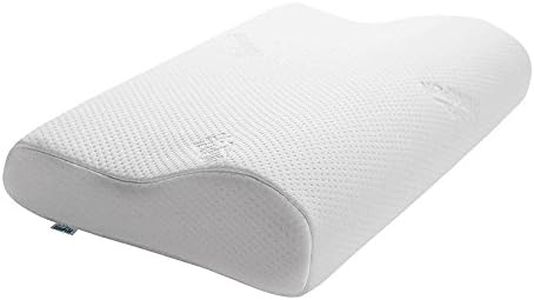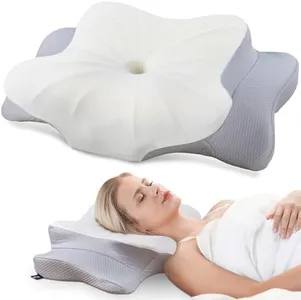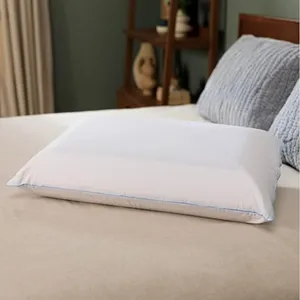We Use CookiesWe use cookies to enhance the security, performance,
functionality and for analytical and promotional activities. By continuing to browse this site you
are agreeing to our privacy policy
10 Best Pillows For Back Pain
From leading brands and best sellers available on the web.Buying Guide for the Best Pillows For Back Pain
Choosing the right pillow can make a significant difference if you suffer from back pain. A good pillow not only supports your head and neck, but also helps maintain the natural alignment of your spine through the night, reducing discomfort and supporting overall spinal health. When shopping for a pillow to relieve back pain, you need to focus on how it supports your sleeping posture, provides comfort, and suits your personal preferences and sleeping style.Loft (Pillow Height)Loft refers to the height or thickness of the pillow when it’s lying flat. Loft is important because it affects how your neck and spine are aligned while you sleep. Pillows generally come in low, medium, and high loft. Low loft pillows (less than 3 inches) are best for stomach sleepers or those with smaller frames, medium loft (3-5 inches) suits back sleepers or those with average shoulder width, and high loft (over 5 inches) is typically best for side sleepers or people with broad shoulders. Choosing the right loft ensures your neck isn’t bent too far in either direction, which is crucial for reducing or preventing back pain.
FirmnessFirmness describes how soft or solid the pillow feels and how much it compresses under your weight. Firmness is important because it determines how well the pillow holds your head and neck in place, and whether your spine remains in a neutral position. Softer pillows can be more comfortable for stomach sleepers but might not provide enough support for back or side sleepers. Medium firmness usually works well for most back sleepers, offering a balance between contouring and support. Firmer pillows tend to hold their shape better, which is often necessary for side sleepers or people who need more support to relieve back pain.
MaterialPillow material affects support, comfort, durability, and even temperature regulation. Common materials include memory foam, latex, down, and synthetic fills. Memory foam molds to your shape and can offer excellent pressure relief for areas like the neck and upper back, making it a popular choice for back pain. Latex is responsive and offers both support and a cooler feel. Down and synthetic pillows are softer and squashier but may not give as much structural support. Choosing the right material depends on your comfort preference, any allergies, and how much support you need for your back.
Shape and ContourBeyond the standard rectangular shape, there are contoured pillows designed to support the natural curve of your neck and help maintain spinal alignment. Shaped pillows, such as cervical or orthopedic designs, are especially helpful if your back pain is linked to poor posture or specific spinal issues. They often have dips and rises to cradle your head and support your neck optimally. If you often wake up with pain or you toss and turn, you might benefit from a contoured pillow that keeps your neck and spine aligned through the night.
AdjustabilityAdjustable pillows allow you to add or remove filling to customize the height and firmness. This feature is important for people who are uncertain about their ideal pillow setup or whose needs change over time. If you’re new to buying specialty pillows for back pain, an adjustable pillow lets you experiment with different support levels until you find what works best for your unique needs and preferred sleeping position.


